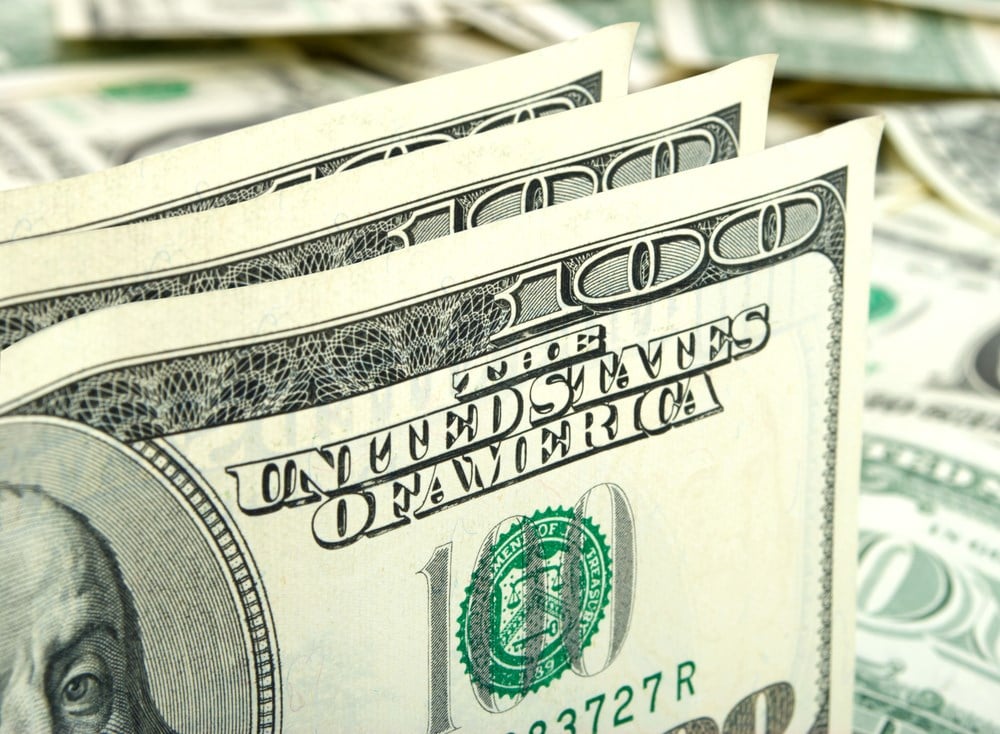
Prices and interest rates are higher. American households are strapped for cash. But is the economy really headed into a recession?
The Federal Reserve Bank of New York’s latest U.S. Recession Probabilities model has the odds of the country entering a negative growth period at 68%. This is the highest it has been since the Fed’s aggressive rate hike campaign began.
As the classic 1977 Meat Loaf song goes, “Two Out of Three Ain’t Bad.” But it ain’t good either.
If the domestic economy truly is cooked, investors may want to start insulating their portfolios with ‘recession-proof’ stocks. Granted, this is a misnomer. The truth is, all stocks are exposed to macroeconomic risk to some extent. And since all are exposed to market risk, they too can go down when the economy goes south.
With this in mind, there are sectors that tend to outperform during economic turbulence. Consumer staples and health care are among the groups that have historically fared well. This is because things like food and medical supplies are in constant demand regardless of the state of the economy.
During the Great Recession of 2007 to 2009, the consumer staples and health care sectors significantly outperformed the market. The same goes for when the S&P 500 plunged 20% from February 2020 to March 2020. In both cases, the returns were negative — but not nearly as bad.
So for the long-term investor bunkering down for a recession, rotating to these sectors makes sense. Even if they go down a bit with the tide, they’ll help preserve portfolio value.
Even better if they pay large dividends that help soften the blow. That’s what makes these three stocks good names to own for the bad times.
What Makes Kimberly-Clark a Good Recession Stock?
Kimberly-Clark Corp. (NYSE: KMB) is the company behind popular consumer brands like Kleenex, Scott and Huggies. Together these products are a model of steady sales growth throughout the ups and downs of the economic cycle. In 2023 and 2024, the company is projected to grow its top line by 1.5% and 1.6%, respectively. During this span, profitability is expected to improve as cost inflation moderates and savings initiatives kick in.
This means Kimberly-Clark will likely have healthy cash flow (as it traditionally has) that will be able to support its growing dividend. The board has increased the dividend for 52 consecutive years, which crowns it a Dividend King — a company with a dividend hike streak of 50 or more years.
Not only is Kimberly-Clark’s dividend rising, but it is one of the highest in the consumer staples space. The 3.3% forward yield is well above the 1.9% sector average — and a comfortable income cushion to have during market volatility.
Does Johnson & Johnson Pay a Big Dividend?
Johnson & Johnson (NYSE: JNJ) is also a Dividend King and offers a generous dividend. When the next quarterly payment goes out on June 6th, it will be $1.19 per share, a 5% increase from the March 2023 dividend. This will make it 63 straight years that J&J has raised its annual dividend. There have been nine U.S. recessions during that span. No other health care company has a longer streak.
With J&J, however, the economic resilience goes beyond the everyday essentials like Band-Aids and Listerine. In fact, Consumer Health is the smallest part of the business. The Pharmaceuticals and Medical Technologies units account for more than 80% of sales. Yes, drugs and surgical tools are critical needs in their own right, but factors outside of consumer shopping habits drive their finances. For instance, generic drug competition or clinical trial results can have a major influence on J&J’s stock performance.
Still, J&J has long proven to be a winning buy-and-hold investment for the growth and income investor.
What Makes Coca-Cola a Good Defensive Stock?
The Coca-Cola Company (NYSE: KO) owns an extensive portfolio of soft drinks, juices, teas and water that are must-haves for many consumers globally. Yes, some will trade down to cheaper private-label brands when times get tough, but for the most part, Coke’s products are in constant demand. They’re also highly accessible — from supermarkets and warehouse clubs to sporting events and concerts.
The company essentially owns a refreshing stream of cash flow that supports its above-industry dividend. In the ‘cola dividend war,’ Coke (2.9%) currently offers a higher cash payout than Pepsi (2.6%). Another member of the royal Dividend King family, Coke has raised its dividend for 62 consecutive years, a feat only Procter & Gamble can top in the staples sector.
But it’s not all about income. Coke has good growth prospects as well. A move into hot beverages and a focus on emerging markets have doubled the company’s addressable market over the last five years. Along with energy drinks, these two categories are expected to be the main drivers of beverage industry growth over the next few years.
Technically, there’s no such thing as a recession-proof stock, but Coke is about as close as it gets. Just ask Warren Buffett.













